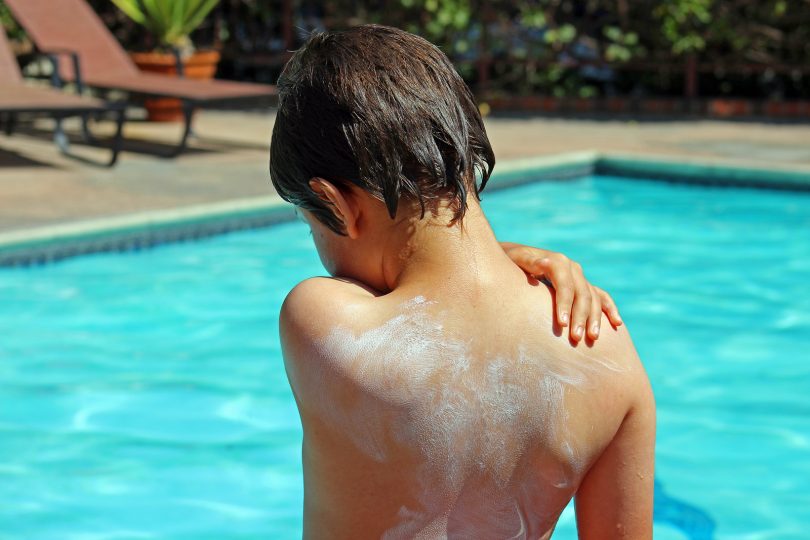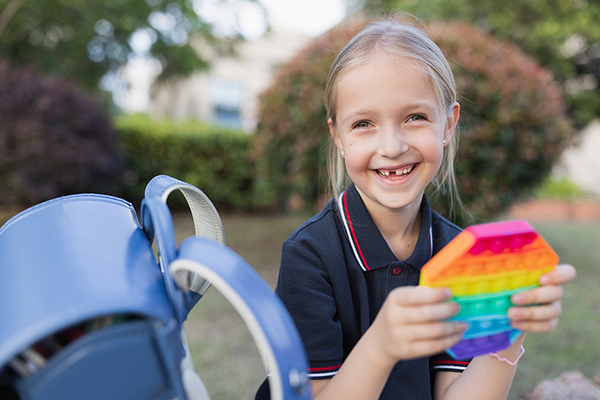It was 30 degrees out, but the sun was shining, and yes, I was that mom trying to apply sunscreen to my teenage son’s face just before he stepped onto the court for his 8 a.m. tennis match.
“Mom!” he protested. “You know you can’t get sunburned when it’s freezing outside!”
We all know that’s not the case, right? But try telling that to your 14- or 4-year-old child. Whether you use threats (“You know we can’t go to the beach unless you put on sunscreen!”) or bribery (You know what? We can go to the beach when you put on sunscreen!”), no child is ever going to love putting on sunscreen.
Then there are the scary news stories, filled with images of kids with puffy faces and burns—due to a sunscreen reaction.
While those kinds of reactions are incredibly rare—less than 1 percent of those who use sunscreen will have a reaction like that, according to the American Contact Dermatitis Society—it’s enough to raise the question for many parents: What’s safe when it comes to sunscreen?
Here are the facts
The fact is, the benefit of wearing sunscreen far outweighs the risks. That’s according to the American Academy of Pediatrics, the American Academy of Dermatology and numerous other experts.
And it’s not just about avoiding the pain of getting severe sunburn caused by UVB rays, right? It’s about the skin damage caused by UVA rays—which includes wrinkles at best and melanoma—an aggressive skin cancer—at worst.
Both wrinkles and skin cancer can seem a pretty far-off worry to most kids, but if you’re a parent, these kinds of statistics make you sit up and pay attention:
- Melanoma is the second most common cancer in women ages 15 to 29.
- Skin cancer is the most commonly diagnosed cancer in people, and while melanoma is only about 5 percent of those cases, it causes more than 75 percent of the complications related to skin cancer.
- The number of sunburns your child experiences, combined with daily exposure to the sun during childhood, are the biggest risk factors for melanoma later in life.
Still worried about sunscreen?
Most experts advise us all to wear sunscreen daily, especially if we are going to be exposed to the sun—whether that’s through a window, car window or if we’re outside playing.
Of course, it makes sense that you want to make sure something you’re putting on your child most days is safe.
Sunscreens today should be broad-spectrum or multi-spectrum, which means they protect against both UVA and UVB rays. (UVA rays cause skin damage, while UVB rays burn.) You can choose from either a physical or chemical sunscreen.
Physical sunscreens include those made with zinc oxide or titanium dioxide. These are commonly known as “mineral” or “natural” sunscreens. The sunscreens sit on top of the skin to block damaging rays. These are the least likely to cause skin irritation and are the ones most commonly recommended for babies. The drawback is that these can leave a white “cast” or residue on the skin, although some formulas now market themselves as “sheer” or “invisible.”
Chemical sunscreens use chemicals like avobenzone to protect against the sun. These sink into the skin, absorb the sun’s rays and change them into heat, then release that heat from the skin. More people may be worried about applying a chemical to the skin, especially since in one highly publicized instance, Hawaii has banned the sunscreen ingredients oxybenzone and octinoxate because they’ve been found to kill coral reefs. Other studies have shown that the chemicals may have some mild hormonal effects, but only when applied in an amount much, much larger than the average person would use even in a lifetime.
So what’s a parent to do?
Practice sun safety. Sunscreen’s still important. But so is practicing sun safety—like wearing hats or clothes to protect from the sun, or avoiding going outside for an extended amount of time during peak sun hours of 10 a.m. to 4 p.m.
Be picky. When choosing a sunscreen, research sunscreen ingredients and decide what you’re comfortable with for your family. Then read labels. It may take some trial and error to decide which sunscreen has the right ingredients, feels good on the skin, and is easy to apply, but it’s worth taking the time.
Know yourself. If you or your child’s skin is sensitive—i.e. the skin is easily irritated or often breaks out in a rash—then it’s smart to do a patch test of any new sunscreen you use. Pick a spot under the arm, apply sunscreen to about a one-inch spot and wait to see if there’s a reaction—before you go to the beach.
Be sunscreen savvy. Experts suggest using at least SPF 30 when going outdoors for a couple hours or more. There’s no need to buy a higher—and more expensive—SPF. Research has shown that SPF 30 protects against 97 percent of UVB rays, while SPF 50 blocks against 98 percent.
Put it on at least a half-hour before you head outdoors. Make sure you apply at least a golf-ball-size amount to your whole body, and rub it in well. For your face, aim for an amount the size of a quarter. For a child, just make sure you use enough to cover the skin well. If you prefer a spray sunscreen, you still need to rub it in to make sure you’re fully protecting your skin. Remember, never spray it onto the face; spray on your hand and apply.
Reapply every two hours or after swimming. Yes, it’s a hassle, but sunscreen does wear off and wash off.
Protect babies’ tender skin. Babies under 6 months shouldn’t use sunscreen unless it’s a mineral sunscreen containing zinc oxide or titanium dioxide. But it’s still best to keep them out of the sun as much as possible, using an umbrella, hat or clothing for protection, and going outdoors before 10 a.m. or after 4 p.m.
What if my child has a reaction?
Remember, 99 percent of us will never have a sunscreen reaction. But for those who do, take some Benadryl and apply hydrocortisone to the skin. If there’s a major reaction with severe swelling, call your doctor.
Then, definitely avoid the sunscreen ingredient that may have caused the problem, and look for other options, including physical sunscreens that are less likely to be irritating.
Because no matter what, we’re going to be out in the sun—and even when it’s cloudy or cold (sorry, son!), sunscreen should be part of our everyday routine.




